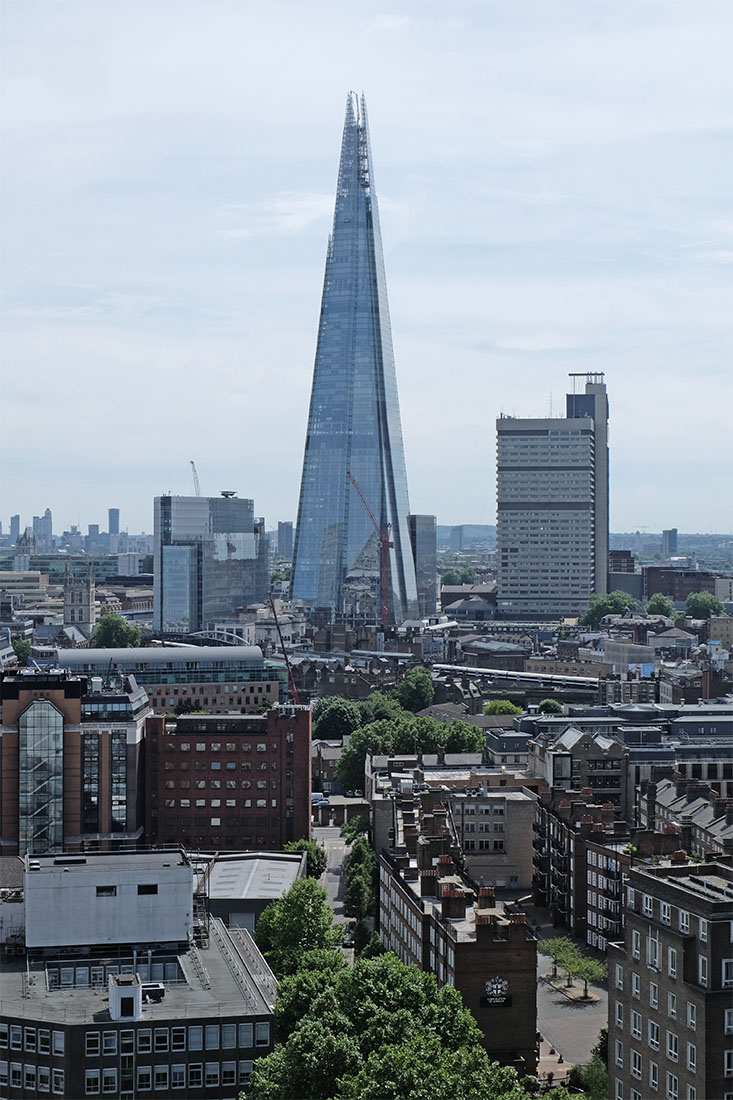 |
 |
 |
 |


The Shard
32 London Bridge Street, London
2000 - 2012
The
Shard, also known as the London Bridge Tower, is a 72-storey, mixed-use
tower located beside London Bridge Station on the south bank of the
River Thames. This project was a response to the urban vision of London
Mayor Ken Livingstone and to his policy of encouraging high-density
development at key transport nodes in London. This sort of sustainable
urban extension relies on the proximity of public transportation,
discourages car use and helps to reduce traffic congestion in the city.
A mix of uses – residential, offices and retail – creates a building that is in use 24 hours a day. The slender and pyramidal form of the tower was determined by its suitability to this mix: large floor plates at the bottom for offices; restaurants, public spaces and a hotel located in the middle; private apartments at the top of the building. The final floors accommodate a public viewing gallery, 240 m above street level. This arrangement of functions also allows the tower to taper off and disappear into the sky - a particularly important detail for Renzo Piano Building Workshop given the building’s prominence on the London skyline.
Eight sloping glass facades, the “shards” define the shape and visual quality of the tower, fragmenting the scale of the building and reflecting the light in unpredictable ways. Opening vents in the gaps or “fractures” between the shards, provide natural ventilation to winter gardens.
The extra-white glass used on the Shard gives the tower a lightness and a sensitivity to the changing sky around it, the Shard’s colour and mood are constantly changing. It required a particular technical solution to ensure the facade’s performance in terms of controlling light and heat. A double-skin, naturally ventilated facade with internal blinds that respond automatically to changes in light levels was developed. The logic is very simple: external blinds are very effective in keeping solar gain out of a building, but unprotected external blinds are not appropriate for a tall building, hence the extra layer of glass facade on the outside.
As part of the project, a section of London Bridge Station’s concourse was also redeveloped and the Shard has been the stimulus for much of the regeneration of the surrounding area, now known as the London Bridge Quarter.
(Text: Renzo Piano Building Workshop)
A mix of uses – residential, offices and retail – creates a building that is in use 24 hours a day. The slender and pyramidal form of the tower was determined by its suitability to this mix: large floor plates at the bottom for offices; restaurants, public spaces and a hotel located in the middle; private apartments at the top of the building. The final floors accommodate a public viewing gallery, 240 m above street level. This arrangement of functions also allows the tower to taper off and disappear into the sky - a particularly important detail for Renzo Piano Building Workshop given the building’s prominence on the London skyline.
Eight sloping glass facades, the “shards” define the shape and visual quality of the tower, fragmenting the scale of the building and reflecting the light in unpredictable ways. Opening vents in the gaps or “fractures” between the shards, provide natural ventilation to winter gardens.
The extra-white glass used on the Shard gives the tower a lightness and a sensitivity to the changing sky around it, the Shard’s colour and mood are constantly changing. It required a particular technical solution to ensure the facade’s performance in terms of controlling light and heat. A double-skin, naturally ventilated facade with internal blinds that respond automatically to changes in light levels was developed. The logic is very simple: external blinds are very effective in keeping solar gain out of a building, but unprotected external blinds are not appropriate for a tall building, hence the extra layer of glass facade on the outside.
As part of the project, a section of London Bridge Station’s concourse was also redeveloped and the Shard has been the stimulus for much of the regeneration of the surrounding area, now known as the London Bridge Quarter.
(Text: Renzo Piano Building Workshop)